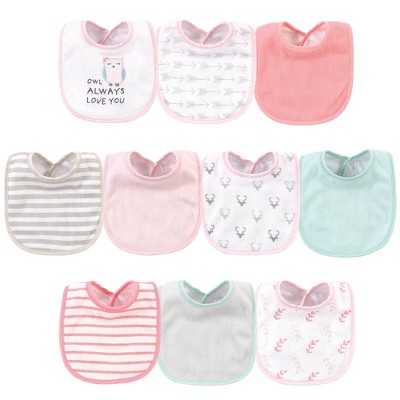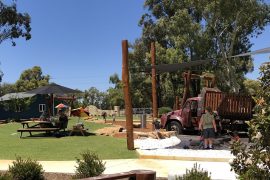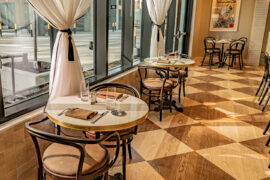The Essential Guide to Bibs for Newborns: Keeping Mealtime Messes at Bay
Welcome to the World of Baby Bibs!
Hello there, fantastic parents and guardians! Are you ready to dive into the colorful and practical world of bibs for newborns? Well, you have come to just the right place! This guide is chock-full of handy tips, thoughtful insights, and the cutest picks to ensure your little munchkin stays spick-and-span during mealtime or those unpredictable drool fests.
Why Newborn Bibs are a Must-Have
Let’s face it, babies are adorably messy. Whether it’s a milk dribble, a puree splatter, or a drool deluge, a sturdy bib is your first line of defense against outfit changes that seem to multiply by the day. Not only do bibs protect your little one’s clothes, but they also save you time on laundry and can even offer a touch of style to your baby’s ensemble. Discover the different types of bibs that cater to various needs, from basic cotton bibs to waterproof wonders.
Types of Bibs for Every Baby Need
Embarking on the bib journey, you’ll find an astonishing variety of options. Here’s a glance at some types of bibs you might want to consider:
- Feeding Bibs: Usually larger to cover more surface area, these come in handy when introducing solids.
- Drool Bibs: Designed for little ones who are teething and need something absorbent to catch all that drool.
- Disposable Bibs: Perfect for on-the-go parents; they’re convenient but not the most eco-friendly option.
- Sleeved Bibs: Offer full coverage and are ideal for those who love to get fully involved in their dining experience—hands, and all!
- Bandana Bibs: Fashionable and functional, they’re great for light droolers and adding a pop of style.
We’ll explore each of these categories in more depth, including their pros and cons, to help you make the best choice for your baby.
Critical Factors to Consider When Choosing a Bib
Bibs are not just about catching spills; they’re about comfort, style, and ease of cleaning as well. Here’s what to look for:
- Material: From organic cotton to silicone, the material choice impacts absorbency, ease of cleaning, and comfort.
- Fasteners: Velcro, snaps, or ties? Each has its own merits, with ease of use and adjustability top on the checklist.
- Size and Shape: A proper fit ensures that the bib serves its purpose without being a nuisance to your baby.
- Easy to Clean: Bibs will get messy, so you’ll want something that’s either machine washable or easily wiped clean.
- Style: Who says functional can’t be fashionable? Pick bibs that bring a smile to your face—and your baby’s!
In the following sections, we’ll unearth the hidden gems of bib features that will make your life, and your baby’s, a little bit cleaner and a whole lot easier.
Safety First: What to Avoid in Baby Bibs
While a good bib is a savior, safety is paramount. Certain materials and designs could pose risks. Watch out for:
- Potential choking hazards like loose buttons or overly long ties.
- Materials that may cause allergic reactions or skin irritations.
- Heavy bibs that could be uncomfortable for your little one’s neck.
Keeping these points in mind, let’s march forward to finding that perfect bib that blends safety, utility, and a dash of cuteness for your bundle of joy.

5 Things Parents Should Know in Preparing for Bibs for Newborns
Before stocking up on bibs for your little treasure, there are five key things you should be clued in on. These insights will steer you towards making informed decisions for your baby’s comfort and your convenience.
-
Consider the Bib Material
Newborns have delicate skin, so selecting the right material for bibs is crucial. Organic materials are a soft and eco-friendly choice, while materials like silicone are durable and easy to clean. Think about your baby’s skin sensitivities and your lifestyle to choose a suitable fabric.
-
Look for Adjustable and Safe Closures
The right closure can make all the difference in fit and safety. Avoid anything that can be easily pulled off or become a choking hazard. Velcro and adjustable snaps are often preferred for their customization and ease of use. Check for any sharp or rough edges that might irritate your baby’s skin.
-
Always Have a Spare
It’s always smart to have a backup bib—or several. The reality of parenthood is things get dirty fast, and having a spare bib on hand during mealtime, outings, or even at night can save you from messy situations and last-minute laundry runs.
-
Wipeable vs. Washable Bibs
Some bibs are designed to be wiped down after use, which can be incredibly handy when you’re on the go. Others are more suited to be tossed in the washing machine. Consider your daily routine to decide if you need a mix of both styles for convenience and practicality.
-
Embrace the Mess
It’s okay for meals to get a little chaotic; it’s all part of the learning process for your baby. Opt for bibs that give your little one room to explore their food, which can aid in developmental milestones. Easy-to-clean surfaces or patterns that camouflage stains can make life easier.
Now that we’ve covered these preparation tips, let’s take a closer look at some of the nuances of bib-buying to ensure you’re fully geared up for your baby’s needs.
Variety is the Spice of Bib Life
It’s true that one size doesn’t fit all when it comes to bibs. Babies go through various stages as they grow, and their bib needs will change along the way. For instance, newborns typically require softer, smaller bibs as they’re not yet starting on solids, whereas older babies may need larger, more durable options to handle the rigors of mealtime discoveries. A variety of bibs will ensure you’re well-equipped for each stage of your baby’s growth.
How Many Bibs Do You Really Need?
This is the million-dollar question, isn’t it? The answer can vary from one baby to another, based on factors like how often they eat, their drooling tendencies, and how frequently you do laundry. As a general rule of thumb, having a stock of about 10-12 bibs should keep you well-prepared for the first few months. This number ensures you’ve always got a clean one ready to go, even on the busiest of days. Remember, it’s better to have a few too many than too few when it comes to staying ahead of the mess.
Bibs Beyond the Basics: Extra Features to Consider
Some bibs offer additional features that can be incredibly helpful. Think pockets that catch falling food, crumb-catchers for the self-feeding toddler, or even bibs with built-in toys to keep those busy hands occupied. While these may not be essential, they could offer that extra bit of convenience and fun that makes all the difference during mealtime.
Maintaining Your Bib Inventory
Quality over quantity can often save the day when choosing the right bibs for your baby. Look for durable materials that can withstand repeated washing and won’t fade or lose shape over time. Inspect bibs regularly for any signs of wear and tear, and don’t hesitate to replace a bib when it’s past its prime. Keeping your bib collection in tip-top shape ensures cleanliness and safety for your baby.
For more great articles please see here. For more information see here
Disclaimer
The articles available via our website provide general information only and we strongly urge readers to exercise caution and conduct their own thorough research and fact-checking. The information presented should not be taken as absolute truth, and, to the maximum extent permitted by law, we will not be held liable for any inaccuracies or errors in the content. It is essential for individuals to independently verify and validate the information before making any decisions or taking any actions based on the articles.




